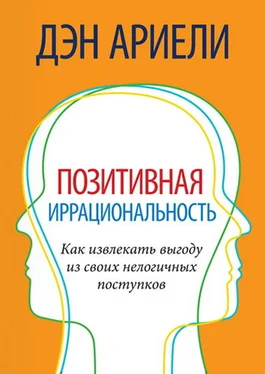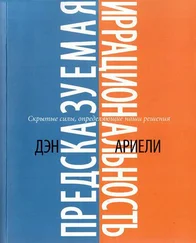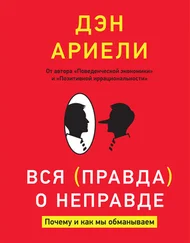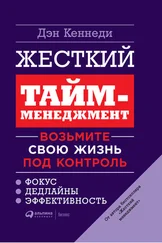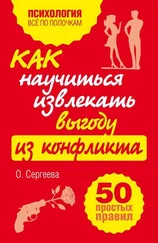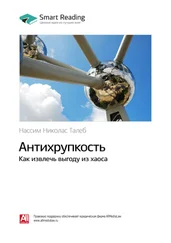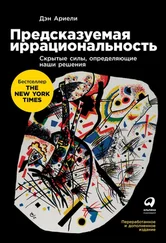Sonja Lyubomirsky, Kennon Sheldon and David Schkade, «Pursuing Happiness: The Architecture of Sustainable Change», Review of General Psychology (2005).
Глава 7
Hot or Not: адаптация, ассортативное скрещивание и рынок красоты
Библиография:
Leonard Lee, George Lowenstein, James Hong, Jim Young and Dan Ariely, «If Tm Not Hot, Are You Hot or Not? Physical-Attractiveness Evaluations and Dating Preferences as a Function of One’s Own Attractiveness», Psychological Science (2008).
Дополнительные источники:
Ed Diener, BrianWolsic and Frank Fujita, «Physical Attractiveness and Subjective Well-Being», Journal of Personality and Social Psychology (1995).
Paul Eastwick and Eli Finkel, «Speed-Dating As a Methodological Innovation», The Psychologist (2008).
Paul Eastwick, Eli Finkel, Daniel Mochon and Dan Ariely, «Selective vs. Unselective Romantic Desire: Not All Reciprocity is Created Equal», Psychological Science (2007).
Elizabeth Epstein and Ruth Guttman, «Mate Selection in Man: Evidence, Theory and Outcome», Social Biology (1984).
Raymond Fisman, Sheena Iyengar, Emir Kamenica and Itamar Simonson, «Gender Differences in Mate Selection: Evidence from a Speed Dating Experiment», Quarterly Journal of Economics (2006).
Guenter Hitsch, Ali Horta^su and Dan Ariely, «What Makes You Click? — Mate Preferences in Online Dating», manuscript University of Chicago (2010).
Глава 8
Когда рынок терпит поражение: пример онлайновых свиданий
Библиография:
Jeana Frost, Zoe Chance, Michael Norton and Dan Ariely, «People are Experience Goods: Improving Online Dating with Virtual Dates», Journal of Interactive Marketing (2008).
Fernanda Viegas and Judith Donath, «Chat Circles», Paper presented at Human Factors in Computing Systems (1999).
Дополнительные источники:
Steven Bellman, Eric Johnson, Gerald Lohse and Naomi Mandel, «Designing Marketplaces of the Artificial with Consumers in Mind: Four Approaches to Understanding Consumer Behavior in Electronic Environments», Journal of Interactive Marketing (2006).
Rebecca Hamilton and Debora Thompson, «Is There a Substitute for Direct Experience? Comparing Consumers’ Preferences after Direct and Indirect Product Experiences», Journal of Consumer Research (2007).
John Lynch and Dan Ariely, «Wine Online: Search Costs Affect Competition on Price, Quality and Distribution», Marketing Science (2000).
Michael Norton, Joan DiMicco, Ron Caneel and Dan Ariely, «Anti-Group Ware and Second Messenger», ВТ Technology Journal (2004).
Глава 9
Сопереживание и эмоции: почему мы помогаем одному и не помогаем многим
Библиография:
Deborah Small and George Loewenstein, «Helping a Victim or Helping the Victim: Altruism and Identifiability», Journal of Risk and Uncertainty (2003).
Deborah Small and George Loewenstein, «The Devil You Know: The Effects of Identifiability on Punishment», Journal of Behavioral Decision Making (2005).
Deborah Small, George Loewenstein and Paul Slovic, «Sympathy and Callousness: The Impact of Deliberative Thought on Donations to Identifiable and Statistical Victims», Organizational Behavior and Human Decision Processes (2007).
Peter Singer, «Famine, Affluence and Morality», Philosophy and Public Affairs (1972).
Peter Singer, «The Life You Can Save», Random House (2009).
Paul Slovic, «‘If I Look at the Mass I Will Never Act’: Psychic Numbing and Genocide», Judgment and Decision Making (2007).
Paul Slovic, «Can International Law Stop Genocide When Our Moral Institutions Fail Us?», manuscript Decision Research (2010).
Дополнительные источники:
Elizabeth Dunn, Lara Aknin and Michael Norton, «Spending Money on Others Promotes Happiness», Science (2008).
Keith Epstein, «Crisis Mentality: Why Sudden Emergencies Attract More Funds Than Do Chronic Conditions and How Nonprofits Can Change That», Stanford Social Innovation Review (2006).
David Fetherstonhaugh, Paul Slovic, Stephen Johnson and James Friedrich, «Insensitivity to the Value of Human Life: A Study of Psychophysical Numbing», Journal of Risk and Uncertainty (1997).
Karen Jenni and George Loewenstein, «Explaining the ‘Identifiable Victim Effect», Journal of Risk and Uncertainty (1997).
Thomas Schelling, «The Life You Save May Be Your Own» in Samuel Chase (Ed.), Problems in Public Expenditure Analysis,Washington DC: The Brookings Institute (1968).
Deborah Small and Uri Simonsohn, «Friends of Victims: Personal Experience and Prosocial Behavior», Journal of Consumer Research (Special Issue on Transformative Consumer Research) (2008).
Глава 10
Долгосрочные эффекты краткосрочных эмоций: почему не стоит ничего делать в плохом настроении
Библиография:
Eduardo Andrade and Dan Ariely, «The Enduring Impact of Transient Emotions on Decision Making», Organizational Behavior and Human Decision Processes (2009).
Дополнительные источники:
Eduardo Andrade and Teck-Hua Ho, «Gaming Emotions in Social Interactions», Journal of Consumer Research (2009).
Dan Ariely, Anat Bracha and Stephan Meier, «Doing Good or Doing Well? Image Motivation and Monetary Incentives in Behaving Prosocially», American Economic Review (2009).
Roland Benabou and Jean Tirole, «Incentives and Prosocial Behavior», American Economic Review (2006).
Ronit Bodner and Drazen Prelec, «Self-Signaling and Diagnostic Utility in Everyday Decision Making», Psychology of Economic Decisions, Volume I [Isabelle Brocas and Juan Carrillo], Oxford University Press (2003).
Jennifer Lerner, Deborah Small and George Loewenstein, «Heart Strings and Purse Strings: Carryover Effects of Emotions on Economic Decisions», Psychological Science (2004).
Gloria Manucia, Donald Baumann and Robert Cialdini, «Mood Influences on Helping: Direct Effects or Side Effects?», Journal of Personality and Social Psychology (1984).
Drazen Prelec and Ronit Bodner. «Self-Signaling and Self-Control», Time and Decision: Economic and Psychological Perspectives on Intertemporal Choice , [George Loewenstein, Daniel Read 8c Roy Baumeister], New York: Russell Sage Press (2003).
Norbert Schwarz and Gerald Clore, «Mood, Misattribution and Judgments of Well-Being: Informative and Directive Functions of Affective States», Journal of Personality and Social Psychology (1983).
Norbert Schwarz and Gerald Clore, «Feelings and Phenomenal Experiences», Social Psychology: Handbook of Basic Principles [Tory Higgins and Arie Kruglan-sky], New York: Guilford (1996).
Uri Simonsohn, «Weather to Go to College», The Economic Journal (2009).
Глава 11
Уроки нашей иррациональности: зачем нужен тест
Читать дальше
Конец ознакомительного отрывка
Купить книгу
